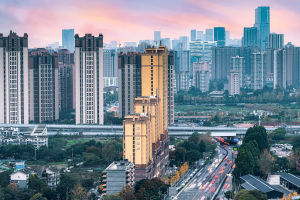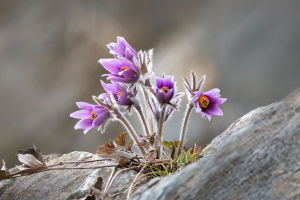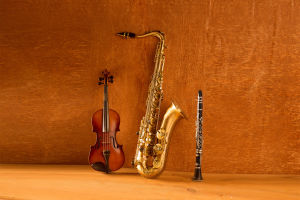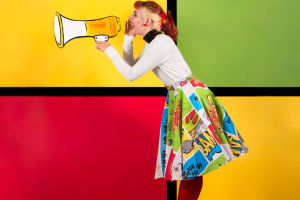
Exploring cities through a lens is an exciting adventure filled with vibrant moments waiting to be captured. From busy streets and towering buildings to quiet corners and hidden gems, urban photography offers endless opportunities.
For our Lykkers, who are eager to improve their cityscape shots, these tips can help you refine your technique, embrace unique perspectives, and make the most of your camera settings.
Essential Photography Gear for Urban Shots
When it comes to urban photography, having the right gear is crucial. Compact and versatile cameras are often the best choice, especially those that allow quick adjustments on the go.
For nighttime cityscapes, a mirrorless camera’s electronic viewfinder can be a game-changer. It provides real-time exposure adjustments, which is particularly useful when shooting in low-light conditions. Many cameras come with helpful features, such as an adjustable screen, allowing for more flexibility in composing shots from unusual angles.
Prime lenses, such as the Canon EF-M 22mm f/2 STM, are excellent for urban photography due to their portability and ability to deliver sharp, wide-angle images. If more versatility is needed, zoom lenses like the Canon EF-M 11-22mm f/4-5.6 IS STM offer flexibility for capturing both expansive landscapes and fine details.
For those using digital SLRs, the Canon EOS 250D and its swivel screen are perfect for capturing dynamic perspectives. Additionally, lenses such as the Canon EF-S 24mm f/2.8 STM or the Canon EF-S 10-18mm f/4.5-5.6 IS STM make it easy to photograph large buildings or intricate architectural details.
Finding Inspiration in the City
Urban environments are rich with stories, and these stories can be conveyed through your images. Every city has its unique rhythm, and capturing the movement within it can bring your photographs to life. Walking through a city, you’ll notice the hustle and bustle of people, vehicles, and everyday life. Try to find a spot with good visibility, like a busy intersection, to capture the energy of the city.
The night transforms many cities, adding an entirely new dimension to urban photography. The glow from streetlights or storefronts creates magical reflections, and long exposure shots can turn traffic into streaks of light, enhancing the sense of motion in your images.
Contrasts between old and new, quiet and busy, or traditional and modern elements make for powerful visual statements. Look for locations where you can juxtapose these contrasts — such as photographing a historical building framed by a modern skyscraper — to convey the complexity and diversity of city life.
Creative Angles and Perspectives
While standard tourist shots are fun, creativity is what truly makes urban photography stand out. Try exploring unusual angles that show the city from a fresh perspective. Shooting from the ground or high up, above a crowd, can give a new dimension to familiar scenes. Adjustable camera screens can be incredibly helpful for composing these shots.
Another technique to consider is focusing on the smaller details. Rather than capturing wide cityscapes, look for interesting textures, like the weathered bricks of an old building, or the patterns of a tiled floor. These finer elements tell their own story and can make for compelling compositions.
Photography in Low Light
Cities offer plenty of opportunities for night photography, but capturing these moments requires preparation, especially when it comes to lighting. The key is to adjust your settings to suit the low-light conditions without relying on a flash, which can disrupt the ambiance.
Many cameras, including models like the Canon EOS RP, offer a manual night shooting mode. This allows you to capture multiple images in quick succession, merging them to reduce motion blur while optimizing exposure.
Using a prime lens with a wide aperture, such as the Canon RF 50mm F1.8 STM, is ideal for low-light photography. This lens is small, portable, and perfect for capturing sharp images even when the light is limited. To get the most from these lenses, experimenting with aperture priority mode can help control depth of field, while shutter priority mode allows for managing motion in your shots.
Capturing the City's Essence
The essence of a city is not just in its skyline or popular landmarks, but also in the small moments and quiet corners. Photography can reveal the character of a city through the details. Whether it's the intricate designs of street lamps or the vibrant signs that line a market, these elements contribute to the unique identity of the city.
Look for these moments that might otherwise go unnoticed. For instance, capturing the reflection of a neon sign in a puddle can create an entirely new visual dynamic. Observing how light plays with shadows can also add drama to your images, making them more captivating.
Experimenting with Time and Motion
Urban photography is all about capturing life in motion, and this can be achieved through both fast-paced action shots and long exposure techniques. A long exposure allows you to capture the blur of moving cars or pedestrians, turning ordinary city scenes into dynamic, abstract representations of urban life.
Take time to revisit the same locations at different times of day to observe how the lighting changes. Early mornings or late evenings often provide softer light and fewer people, offering an entirely different feel to your photographs.
Conclusion
Urban photography is about more than just documenting the city; it's about telling a story through your lens. By embracing creative techniques, exploring various perspectives, and understanding your camera’s settings, you can create compelling images that capture the true essence of urban life.
5 Street Photography Tips You MUST KNOW - Advice from a Photojournalist
Video by Sean Gallagher - Pro Photographer


